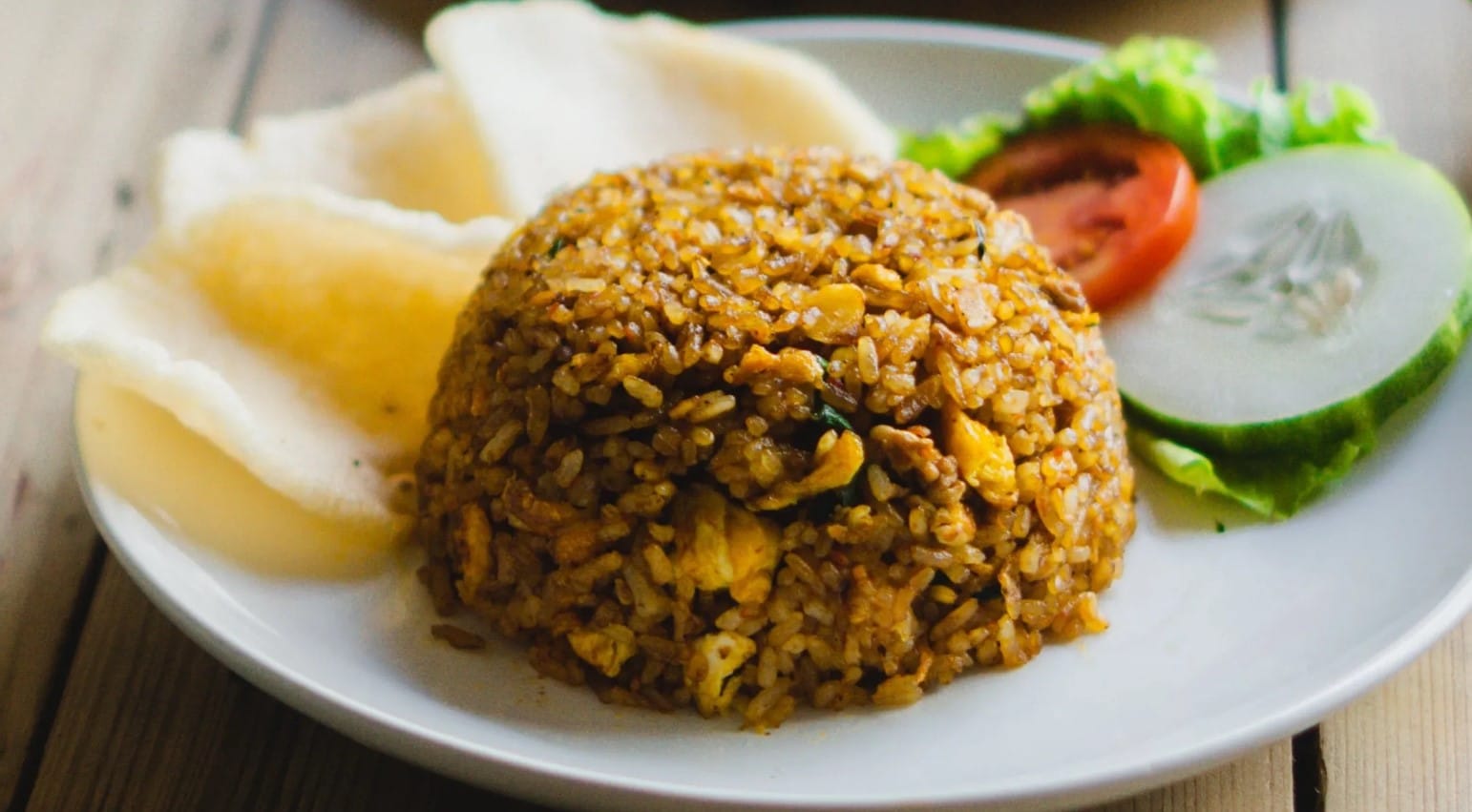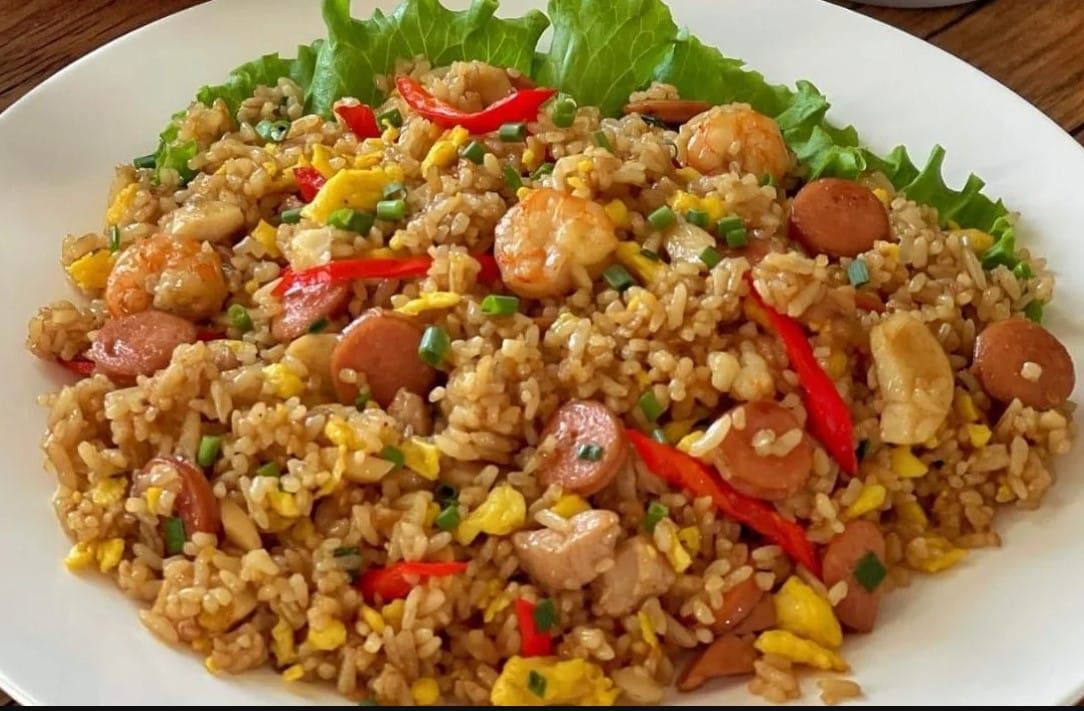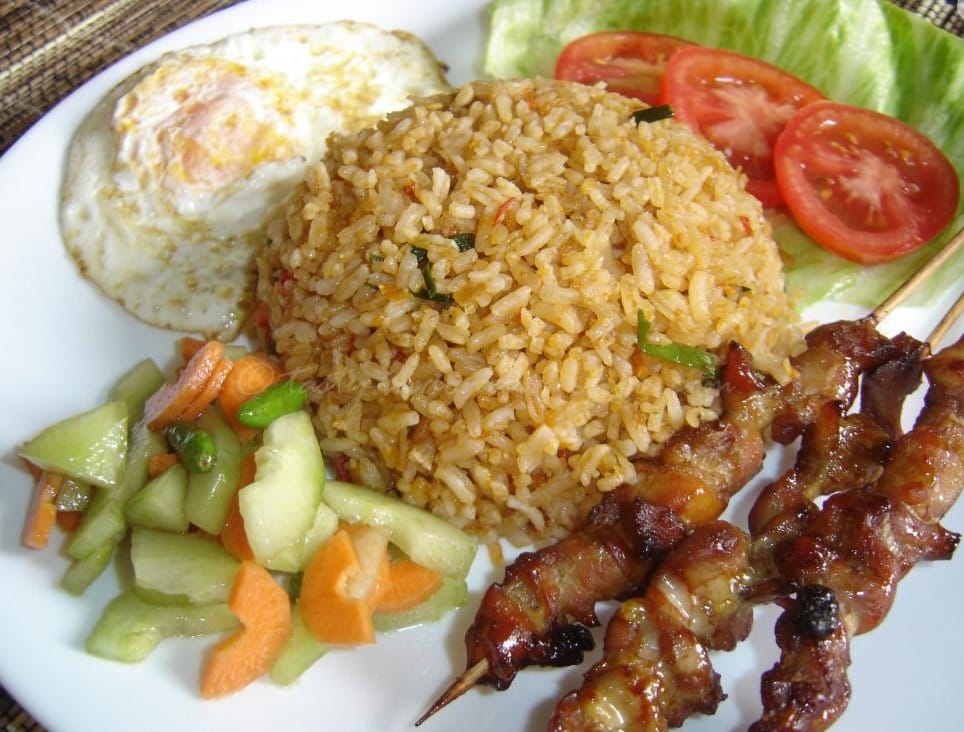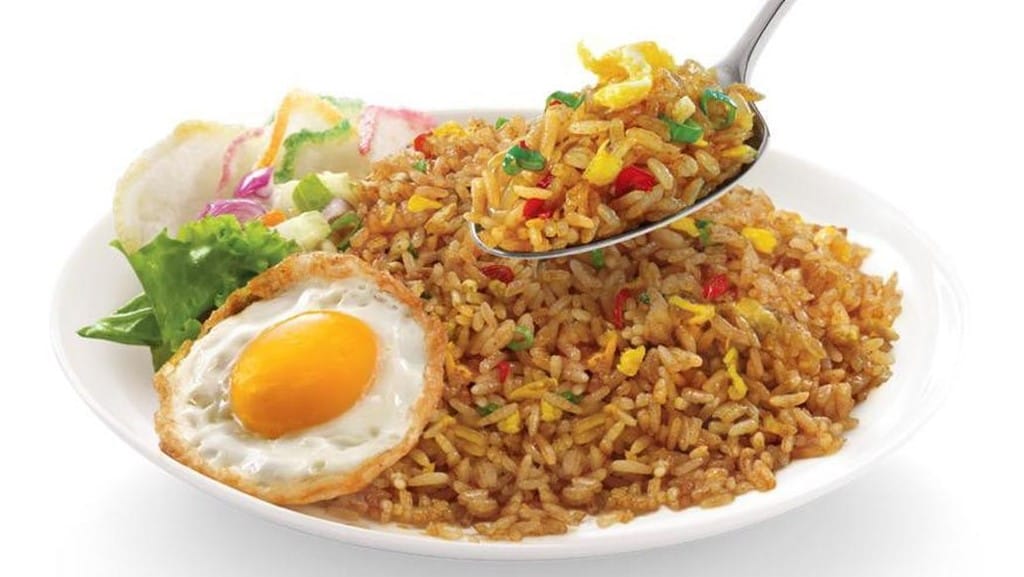A Humble Dish with Global Appeal
Fried rice. Two words that conjure images of steaming woks and sizzling grains. It’s a dish known worldwide, enjoyed by millions across different cultures and continents. But where did it come from? How did this simple yet flavorful dish become a global sensation? Let’s dig in and explore the fascinating journey of fried rice.
Ancient Beginnings
The story of fried rice starts in China, a country with a rich culinary history. Over 1,500 years ago, during the Sui Dynasty, rice was a staple food in Chinese households. It was plentiful, and leftovers were common. In a culture where waste was frowned upon, clever cooks found a solution to make use of these leftovers. They tossed cold, day-old rice into hot woks, added bits of meat, vegetables, and sometimes eggs, and stir-fried everything together. The result? A new dish was born, one that was not only delicious but also practical and resourceful.
This method of cooking rice quickly gained popularity. It was an efficient way to use up leftovers and create a hearty meal. The high heat of the wok ensured that the rice grains remained separate and didn’t turn mushy, while the added ingredients provided a burst of flavors and textures. This simple yet ingenious technique laid the foundation for what we now know as fried rice.

Spread Across Asia
As time went on, the concept of fried rice spread beyond China. Traders, travelers, and migrants carried the idea across borders, introducing it to different regions in Asia. Each region embraced the dish and added its own unique twist, resulting in a variety of fried rice recipes that reflect local tastes and ingredients.
In Thailand, for example, fried rice is known as “khao pad.” Thai cooks often use fish sauce, garlic, and chilies to give the dish a distinctive flavor. They might also add ingredients like shrimp, chicken, or pineapple, creating a harmonious blend of sweet, salty, and spicy tastes.
In Indonesia, fried rice is called “nasi goreng.” This version is typically flavored with kecap manis, a sweet soy sauce, and often includes shallots, garlic, and chili paste. Nasi goreng is a beloved street food, sold by vendors who cook it up fresh in large woks, filling the air with its tantalizing aroma.
Japan has its own version of fried rice, known as “chahan.” Japanese fried rice is usually lighter in flavor, with a soy-based seasoning. It often includes ingredients like peas, carrots, and bits of ham or bacon. The Japanese also have a special version called “omurice,” where the fried rice is wrapped in a thin omelet and topped with ketchup.
A Dish of Necessity
Fried rice wasn’t fancy. It was practical. A way to use leftovers. To stretch ingredients. To feed many with little. It was a dish born out of necessity, a testament to the ingenuity of cooks who made the most of what they had.
Farmers ate it for breakfast, fueling up for a long day of work in the fields. Laborers packed it for lunch, enjoying a filling and satisfying meal during their break. Families gathered around it for dinner, sharing stories and laughter over bowls of steaming fried rice.
The beauty of fried rice lies in its versatility. It can be made with whatever ingredients are on hand, making it an ideal dish for times of scarcity. Whether it’s a handful of vegetables, some leftover meat, or just a few eggs, fried rice can transform humble ingredients into a delicious and comforting meal.

The Indonesian Connection
In Indonesia, nasi goreng became a staple. “Nasi” means rice. “Goreng” means fried. Simple name. Complex flavors. Nasi goreng is more than just a dish; it’s a cultural icon, a symbol of Indonesian culinary heritage.
Street vendors played a significant role in popularizing nasi goreng. They set up their carts on busy streets, cooking up batches of fried rice in large woks. The sound of sizzling rice and the aroma of garlic and shallots wafting through the air drew in hungry customers. Each vendor had their own secret recipe, adding ingredients like kecap manis, chili paste, and sometimes even a fried egg on top.
Nasi goreng is a dish that reflects the diverse flavors of Indonesia. The sweet and savory notes of kecap manis, the heat from the chili paste, and the aromatic garlic and shallots all come together to create a symphony of flavors. It’s a dish that can be enjoyed at any time of day, whether as a hearty breakfast, a quick lunch, or a satisfying dinner.

A National Dish Emerges
Nasi goreng evolved. It became more than food. It became culture. A point of pride. In 2018, Indonesia’s Ministry of Tourism declared it a national dish, alongside rendang and sate. A humble meal elevated to icon status.
This recognition was a testament to the importance of nasi goreng in Indonesian culture. It’s a dish that brings people together, whether it’s families sharing a meal at home or friends enjoying a late-night snack from a street vendor. Nasi goreng is a dish that transcends social and economic boundaries, enjoyed by people from all walks of life.
The declaration of nasi goreng as a national dish also helped to promote Indonesian cuisine on the global stage. It highlighted the rich culinary heritage of Indonesia and introduced the world to the unique flavors and ingredients that make nasi goreng so special.
Global Recognition
The world took notice. CNN Travel ranked it second on their “World’s 50 Best Foods” list in 2011, beating out sushi and tom yum goong. This recognition brought international attention to nasi goreng and sparked a newfound interest in Indonesian cuisine.
Tourists sought it out. They returned home with cravings. Recipes spread online. Indonesian restaurants abroad featured it prominently. Nasi goreng became a global sensation, enjoyed by people from all corners of the world.
The rise of social media also played a role in the global popularity of nasi goreng. Food bloggers and influencers shared their experiences of trying nasi goreng, posting mouth-watering photos and videos that went viral. This digital exposure helped to introduce nasi goreng to a wider audience and inspired home cooks to try making it themselves.

Variations on a Theme
Nasi goreng isn’t one dish. It’s many. Each region, each cook, has a version. The beauty of nasi goreng lies in its adaptability. It can be customized to suit different tastes and preferences, resulting in a myriad of variations.
Some add prawns or chicken. Others keep it vegetarian. Eggs are common, either mixed in or served sunny-side up on top. The addition of a fried egg, known as “telur mata sapi,” is a popular choice, adding a rich and creamy element to the dish.
Nasi goreng kampung, or village-style fried rice, uses anchovies and water spinach, giving it a distinct flavor and texture. Nasi goreng pete includes stink beans, which have a unique taste and are loved by many Indonesians. The variations are endless, each one offering a different take on this beloved dish.
In Malaysia, a similar dish called “nasi goreng kampung” is popular. It often includes ingredients like dried anchovies, water spinach, and sambal belacan, a spicy chili paste made with shrimp paste. This version of fried rice is known for its bold and robust flavors.
In the Philippines, fried rice is known as “sinangag.” It’s typically made with garlic and often served as a side dish for breakfast, accompanied by fried eggs and cured meats like tocino or longganisa. Sinangag is a staple in Filipino households, enjoyed as part of a hearty and satisfying breakfast.
More Than Just Taste
The appeal of nasi goreng goes beyond flavor. It’s about texture. The contrast of soft rice and crispy bits. The interplay of sweet, salty, and spicy. Each bite offers a delightful combination of flavors and textures that keep you coming back for more.
It’s about nostalgia. Memories of home-cooked meals. Late-night snacks after a night out. Comfort food at its finest. For many, nasi goreng is a dish that evokes fond memories and a sense of comfort and familiarity.
The process of making nasi goreng is also part of its charm. The rhythmic sound of the spatula hitting the wok, the aroma of garlic and shallots sizzling in hot oil, and the sight of the rice grains dancing in the wok all contribute to the sensory experience of cooking and eating nasi goreng.
A Dish for All Occasions
Nasi goreng fits anywhere. Breakfast table. Lunch box. Dinner plate. Midnight snack. It’s a dish that can be enjoyed at any time of day, making it incredibly versatile and convenient.
It’s adaptable. Dress it up with prawns and fancy plating for a dinner party. Keep it simple for a quick weeknight meal. Nasi goreng can be as elaborate or as straightforward as you want it to be, making it suitable for any occasion.
For a special occasion, you might add luxurious ingredients like prawns, crab meat, or even lobster. Garnish it with fresh herbs, sliced chilies, and a squeeze of lime for an elegant presentation. On the other hand, for a quick and easy meal, you can simply toss together some leftover rice, vegetables, and a few seasonings for a satisfying and delicious dish.
The Secret’s in the Rice
Good fried rice starts with good rice. Day-old rice works best. It’s drier. Less likely to clump. The key to perfect fried rice is using rice that has been cooked and then cooled, allowing the grains to firm up and separate.
The wok is key. High heat. Quick cooking. It keeps the rice from getting mushy. Gives it that smoky “wok hei” flavor. “Wok hei,” or “breath of the wok,” is a term used to describe the unique flavor imparted by cooking over high heat in a well-seasoned wok. It’s a hallmark of good fried rice and adds a depth of flavor that can’t be replicated with other cooking methods.
The technique of stir-frying is also crucial. The ingredients need to be cooked quickly and evenly, ensuring that each grain of rice is coated with the seasonings and flavors. The high heat of the wok helps to caramelize the ingredients, adding a subtle smokiness and complexity to the dish.
A Lesson in Resourcefulness
Nasi goreng teaches us something. About making do. About creativity in the kitchen. About turning leftovers into something special. It’s a dish that embodies the principles of resourcefulness and ingenuity.
It’s a reminder. Good food doesn’t have to be complicated. Or expensive. Sometimes, the simplest dishes are the best. Nasi goreng is a testament to the idea that with a little creativity and resourcefulness, you can transform humble ingredients into a delicious and satisfying meal.
The story of nasi goreng is also a reflection of the resilience and adaptability of the people who created it. In times of scarcity, they found ways to make the most of what they had, turning leftovers into a beloved dish that has stood the test of time.
The Future of Fried Rice
Nasi goreng continues to evolve. Chefs experiment with new ingredients. Fusion versions pop up in trendy restaurants. The versatility of nasi goreng makes it a perfect canvas for culinary innovation and experimentation.
But the essence remains. It’s still about taking what you have. Making it delicious. Sharing it with others. The core principles of nasi goreng—resourcefulness, simplicity, and flavor—remain unchanged, even as the dish continues to evolve and adapt to new trends and tastes.
In recent years, we’ve seen creative takes on nasi goreng that incorporate ingredients from different cuisines. For example, some chefs have experimented with adding kimchi for a Korean twist, or using quinoa instead of rice for a healthier option. These fusion versions of nasi goreng showcase the dish’s adaptability and its ability to transcend cultural boundaries.
A Dish That Unites
In a world of differences, fried rice brings people together. It crosses borders. Bridges cultures. Speaks a universal language of flavor. Fried rice is a dish that transcends cultural and geographical boundaries, enjoyed by people from all walks of life.
From street carts in Jakarta to five-star restaurants in New York. Nasi goreng has found its place. A humble dish. A global icon. The journey of nasi goreng from a simple, resourceful meal to a beloved global dish is a testament to its universal appeal and enduring popularity.
Fried rice, in all its variations, is a dish that unites people. It’s a dish that can be found in homes, street stalls, and restaurants around the world, each version reflecting the unique flavors and ingredients of its region. Whether you’re enjoying a plate of nasi goreng in Indonesia, chahan in Japan, or khao pad in Thailand, you’re partaking in a shared culinary tradition that spans continents and cultures.
The Last Grain
So next time you eat fried rice, remember. You’re tasting history. Culture. Ingenuity. All in one bowl. Fried rice is more than just a meal; it’s a story of people making the most of what they have, of flavors traveling across oceans, and of a simple idea becoming a global favorite.
It’s more than just a meal. It’s a story. Of people making the most of what they have. Of flavors traveling across oceans. Of a simple idea becoming a global favorite. Nasi goreng. Two words. A world of taste.
As you savor each bite of fried rice, take a moment to appreciate the rich history and cultural significance behind this humble dish. It’s a reminder of the power of food to bring people together, to create connections, and to celebrate the diversity of flavors and traditions that make our world so vibrant and delicious.
